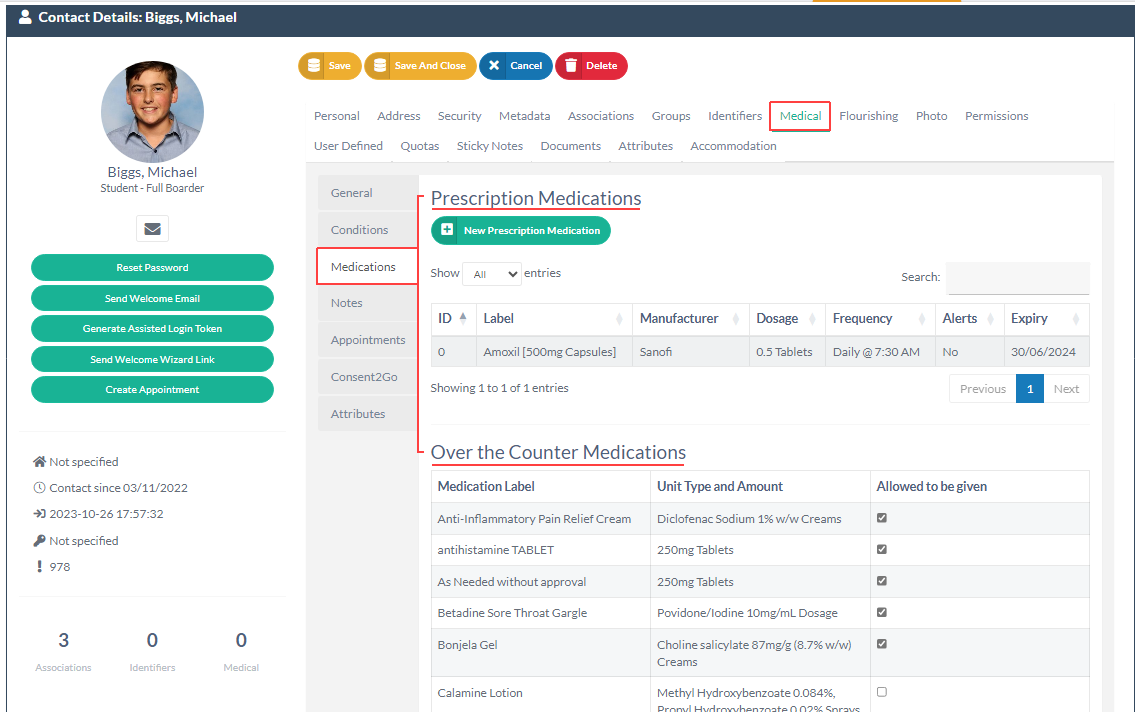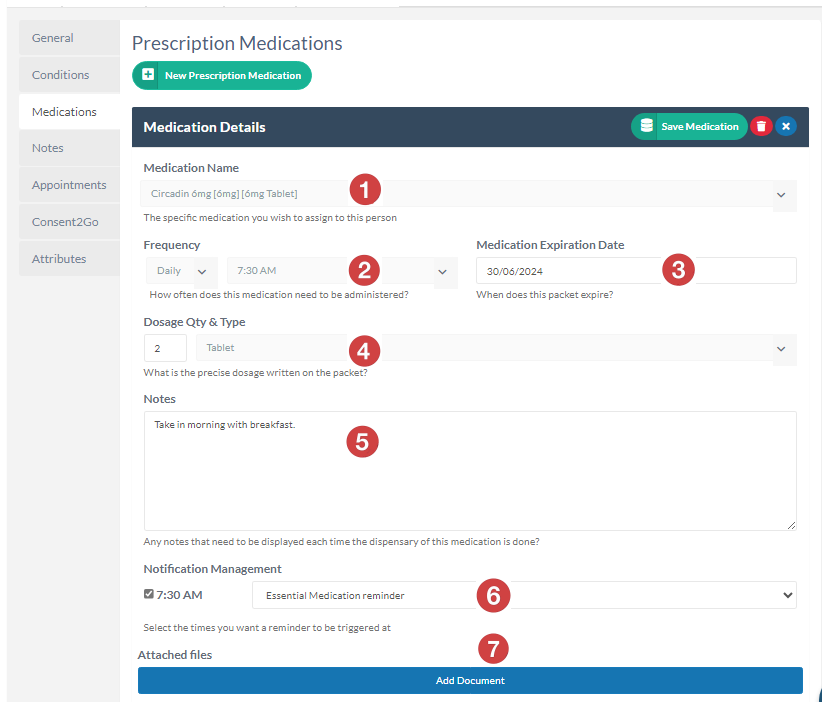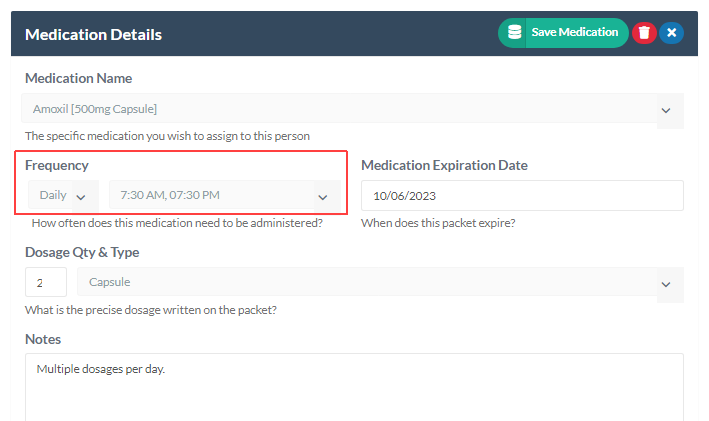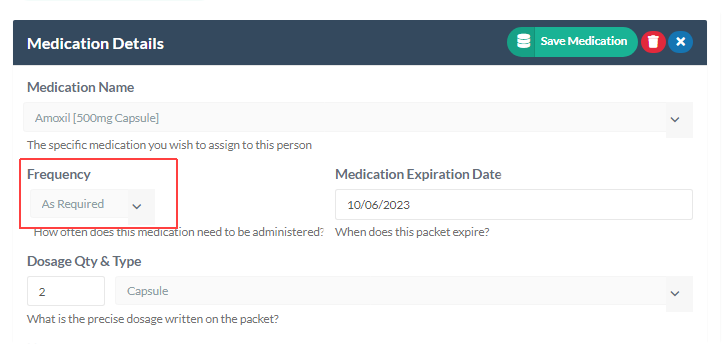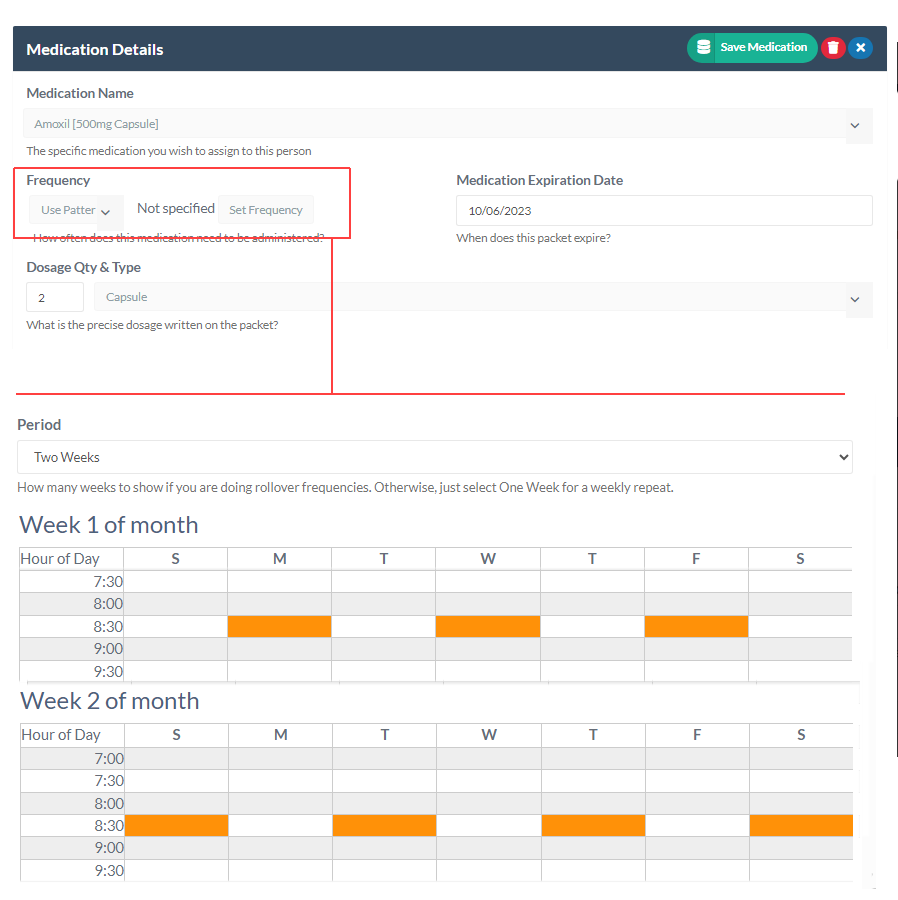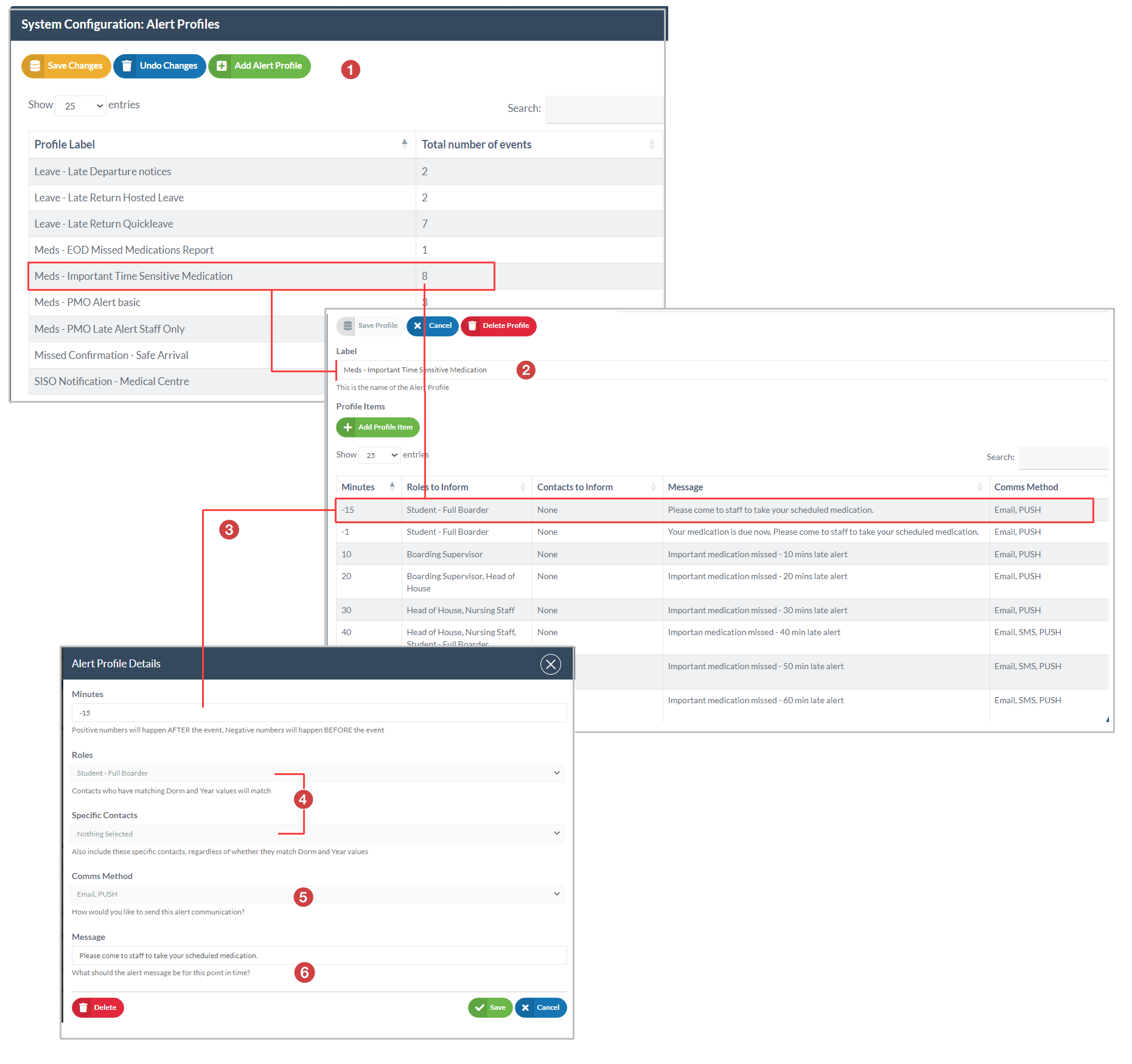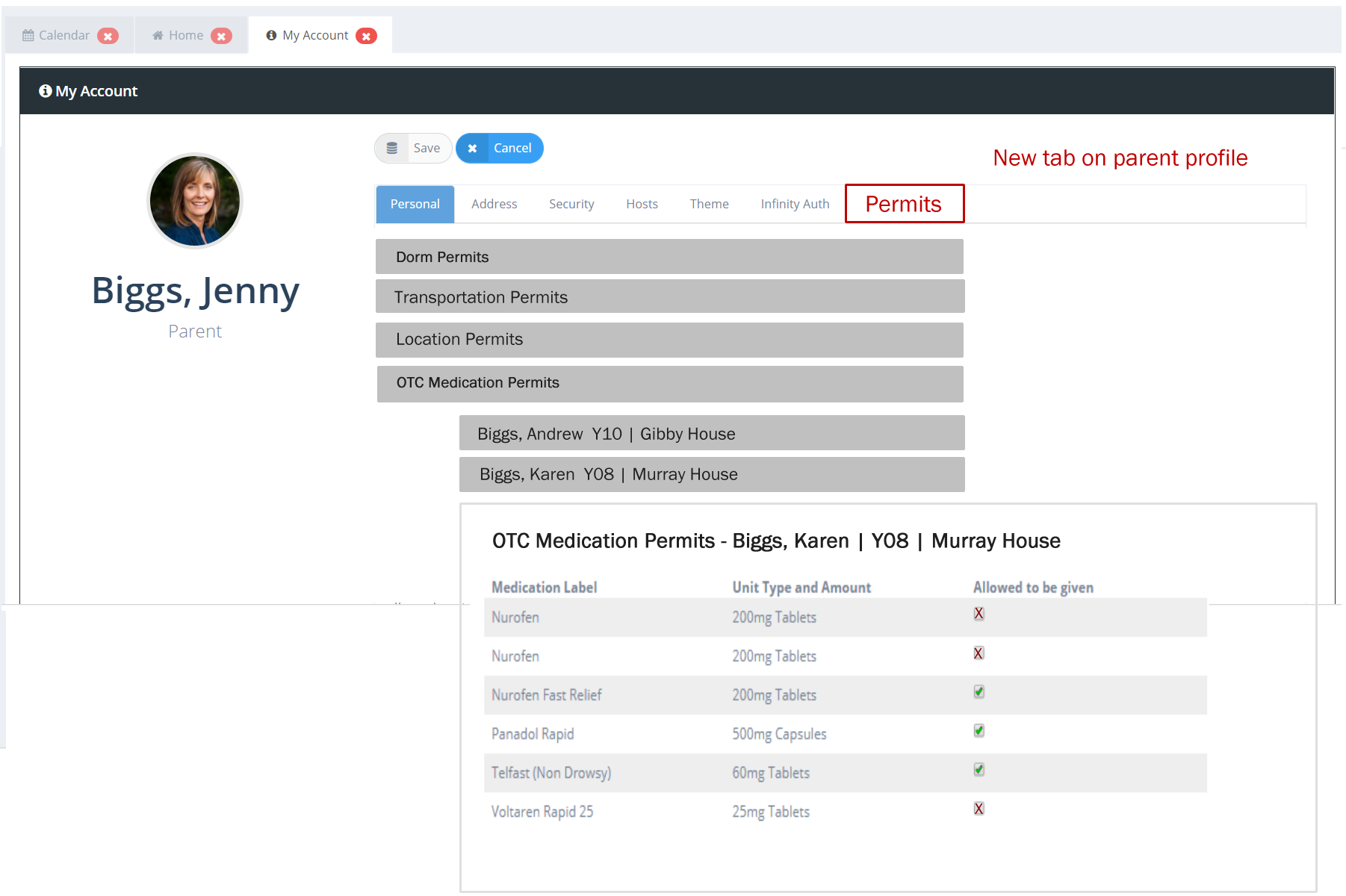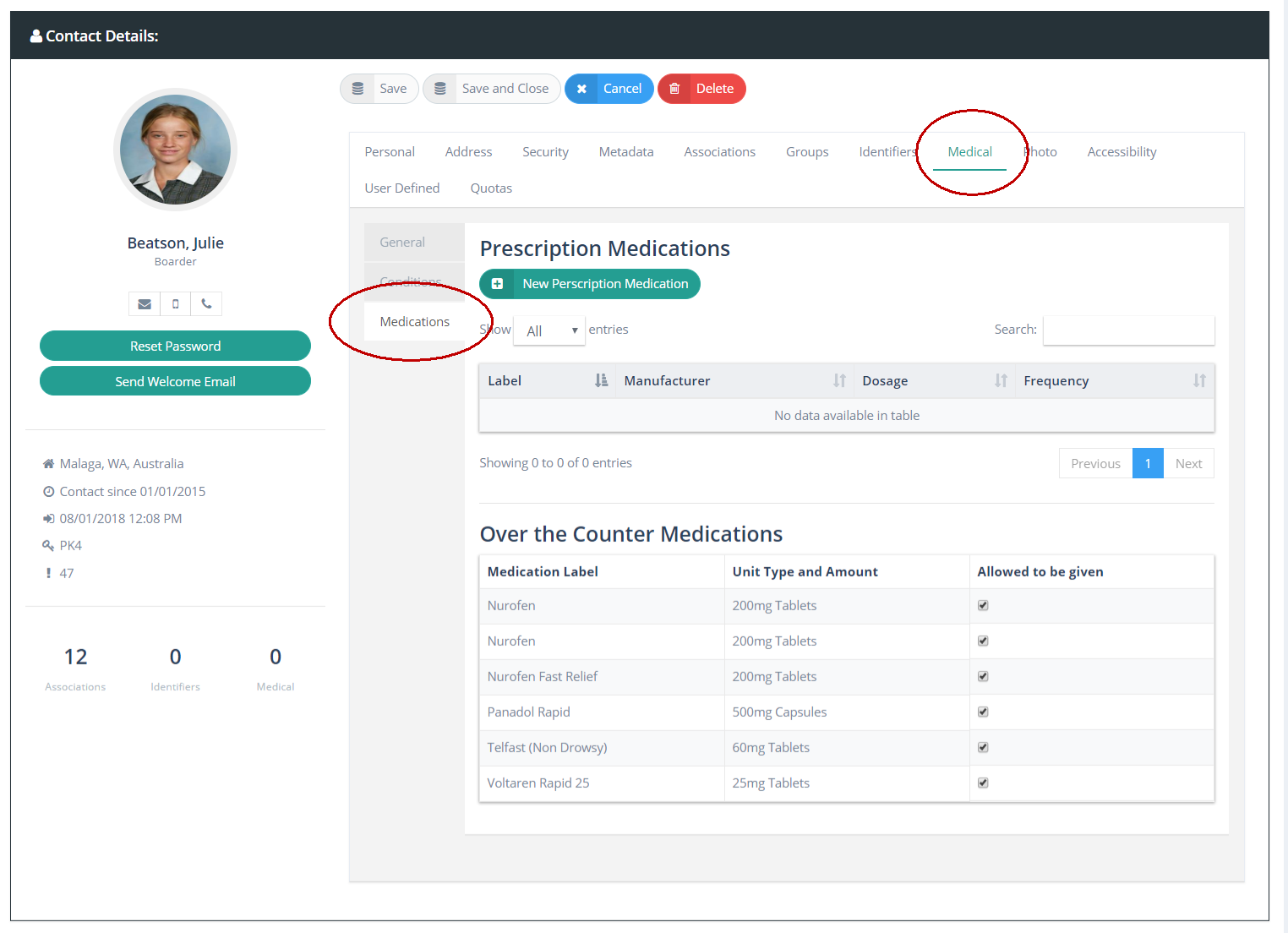31.2 Assigning medications to students
Once medications are placed on your Medications Register they are available to allocate or permit for each student.
When to Assign and when to Permit
Prescription Medications (PMO) are assigned to students. Only qualified staff should assign a prescription medication to a student. When doing so they will be required to set the frequency and dosage for the medication. Once the PMO is assigned to a student with frequency and dosage details, Reach will then maintain a daily schedule of the prescribed medications to students on the Daily Medications Board.
Over the counter (OTC) medications are an open list of medications are available in your system. These are made available for any student to take however parents or guardians are required to set the permits for a student to receive OTC medications. If a student does not have a permit for an OTC then it will not be available for them to receive.
Medications for each student are managed and displayed on the Medical Tab of each student's personal profile. The medical tab has five sub-tabs in the display
General Medical Information
Medical Conditions
Medications
Medical Notes
Appointments
Consent-2-Go (if integrated)
Attributes
31.2.1 Assigning Prescription Medications to students
Once a prescription medication is added to your Medications Register is becomes available for you to allocate the medicine to a student's profile for dispensing.
Clicking on the New Prescription Medication button in a student's profile allows you to enter their prescription details and allocate the relevant prescribed medicine from your medication register.
You are required to enter the following details
Select the Medication Name from your medications register
All PMO medications will be available for selection in the drop down selector.Set the Frequency and Time
See section 31.2.1.1 for more details on the options for setting frequencySet the Medication Expiration Date
This relates to this specific prescription. If the medication is ongoing and the prescription will be filled with repeats then leave this blank. If the medication has a defined completion date (eg: 2 week series of antibiotics) then set the expiration date of the prescription.Set the Dosage quantity and Type
Number of items and type of iitem (eg: 2 tablets)Write any relevant Notes to display to staff when adminiistering the medicine
These notes will display to the staff member who is administering the medication. Example note may be “To be taken with food”Determine if there is any alert profile assigned to the medicine
Alerts can be set to remind students to take their medications or to alert staff where medications are late or missed. See section 31.2.1.2 for more details on Medication AlertsAdd any documents that relate to the medication
Any supporting documents can be loaded to support this medication allocation (eg: copy of prescription)
Scheduled medications
Once a medication is prescribed for a student in their medications profile then REACH will schedule the medication to the daily medications board in line with the frequency and time set for the prescription.
31.2.1.1 Setting Medication Frequency
There are three options for medication frequency
Daily Dosage
Select Daily and the relevant time. For medications that require multiple dosage per day you can set multiple times for a Daily frequency. Setting the frequency to daily and selecting multiple times for the day will schedule the medication for those times on the day.
As Required
Sometimes prescription medications are to be taken as required by students. When this is the case select the As Required option in the Frequency selector. When As Required is selected the medication will not appear on the Daily Medications Board. It will instead be available in the student’s profile in the As Required medications list similar to OTC medications.
Dosages with non-daily or irregular patterns
For medications where the frequency is not every day you can use the Pattern creator. This will allow you to set a range of patterns for up to 5 week cycles that will be continued repeatedly until the expiry date of the medication.
Multi week cycles are designed to allow for different pattern to be set in the subsequent weeks and run as a cycle.
Example - Medication every 2nd day requires a 2 week cycle
Week 1 Mon-Wed-Fri-Sun 8am | Week 2 Tues-Thurs-Sat 8am
Example - Medication Every 3rd day requires a 3 week cycle
Week 1 Mon - Thurs - Sun | Week 2 Wed - Sat | Week 3 Tues - Fri
31.2.1.2 Setting Medication Alerts & Notifications
Reach Assist allows you to create notification and alert structures that are delivered to various users based on times that trigger the alert sequence. For the Medications Module this means that you can
schedule notifications that are sent to students to remind them to take their medications
schedule notifications that are sent to staff to alert them about missed medications that may need attention
Customise your message profiles
In the profile of your student population requiring scheduled PMO medications each day some medications may be very time sensitive and require active alert monitoring that is rigorous, others may require active alert monitoring that is more flexible whilst some medications may not require alert notifications at all.
Reach allows you to customise how you use alert notifications by allowing you to;
create multiple alert notification templates that can detemine both how rigorous the time monitoring is
determine who gets notified for each alert notification
determine the method of communication used for each triggered alert message (Email, SMS, Push notification)
create a sequence of time based alerts that can escalate an upcoming or missed medications to a series of people, and
determine which scheduled PMO medications have alert notification structures associated to them.
How to create an alert notification profile
Alert notification profiles are created in the Alerts settings module at System Configuration > Alerts. Here you can create alert profiles that can be used anywhere in Reach.
Alert notifications are based on a trigger time. For medication alerts this trigger time is the scheduled time for the medications to be administered.
Select Add Alert Profile
Give the alert profile a label (name)
Set the time trigger.
This is a relative measure (+/- minutes from the scheduled time) for the student’s medication. Negative triggers will action before the scheduled time and positive triggers will action after the scheduled time for the medication bt the number of minutes entered. (eg: -15 = 15 minutes before the scheduled medication time).
Multiple Legs or Events: Alert Profiles can have multiple legs or events with each leg using a different time trigger and also different delivery targets for the notification. This allows you to escalate the Alert Notification over a time scale. When a medication has been admiinistered, any untriggered alert notifications will be automatically cancelled.Set who will be notified.
You can set multiple roles or individuals to be notified for each leg of the alert structure.
Selecting a ROLE to be notified will reference the Groups Managed settings for any staff member in that role and only alert them for students who match the Groups Managed settings for Year and House. Selecting an SPECIFIED CONTACT to be notified will alert that person for all students regardless of Year and House settings.Set the communication method.
Alert notifications can be sent by Email, SMS or Push notification. Note that Email and Push are free messages whilst SMS mesages will involve a charge to your SMS account.Set the message content that will be sent to the target recipient(s).
Note tht SMS has a 160 character limit per message. Messages >160 characters will still be sent but will be sent and charged as 2 or more messages.
31.2.2 Permitting (or prohibiting) OTC medications
When OTC medications are created and placed on your Medications Register they become available to all students in their personal Medications Profile. By default, REACH will not allow for the administering of an OTC medication to a student unless the student has a permit for the OTC medication item category.
Permits and prohibitions are set by the parent as part of the Parent Permits structure in REACH. Staff who have the permission [med_assign] set to [Yes] in their Base Security (Accessibility) profile are able to set permits for students for OTC medications also.
For Parents the OTC medication permissions list is available in their My Account profile >> Parent Permissions Tab
For Staff with access to a student's medical profile a student’s OTC medication permissions is visible via the Student's profile page >> Medical Tab >> Medications Tab
